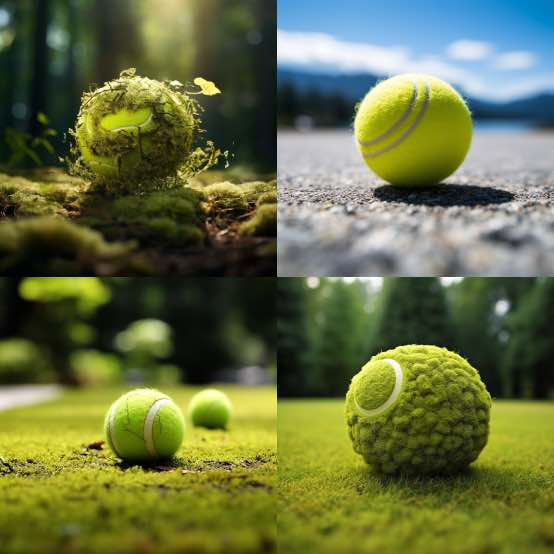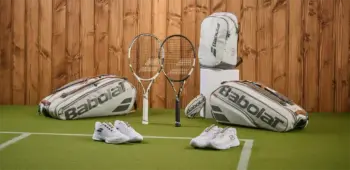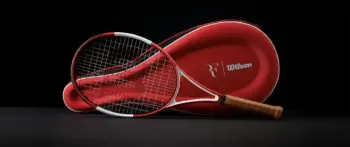Tennis stands before several tough sustainability issues. Here are the environmental challenges of tennis balls and strings.
The Environmental Challenges of Tennis Balls and Strings
Introduction
Tennis captivates millions of players and fans around the world. The thrill of a perfectly executed forehand, the excitement of a closely contested match, and the elegance of the Wimbledon Championships are reasons tennis continues to be a beloved sport. However, amid tennis’s joys and celebrations, a sustainability problem often goes unnoticed – the environmental impact of tennis balls and strings.
In this article, we will explore the sustainability challenges associated with tennis balls and strings, shedding light on the hidden environmental costs of the sport. From the materials used to the manufacturing process, disposal, and possible solutions, we will examine every facet of this issue.
Tennis Balls: Bouncing Toward Sustainability
The Rubber Problem
Tennis balls are primarily made from natural and synthetic rubber, with most of the core being natural rubber. The production of natural rubber is a resource-intensive process that involves clearing land for rubber plantations, often leading to deforestation and habitat destruction. Furthermore, rubber production can result in soil degradation and water pollution due to the use of chemicals.
The Felt Factor
The outer layer of a tennis ball is made of felt, traditionally derived from wool. Wool production involves resource-intensive activities like sheep farming, shearing, and processing. Wool production also consumes vast amounts of water and energy. While some companies are now exploring sustainable alternatives to traditional wool, such as recycled or synthetic felt, the shift is gradual.
Limited Lifespan
One of the most significant sustainability issues with tennis balls is their relatively short lifespan. Tennis balls lose their bounce and become less effective after a few matches, leading to frequent replacements. As a result, millions of tennis balls end up in landfills each year, contributing to the global waste problem.
Recycling Challenges
While there are efforts to recycle tennis balls, the process is far from perfect. Recycling tennis balls requires specialized equipment, and the recycling rate remains low. The inner core, made of rubber, is challenging to recycle effectively, and the felt cover often ends up in landfills or as low-value waste.
Possible Solutions for Tennis Balls
Extended Use: Encouraging players to use balls for an extended period before discarding them could help reduce waste. This is not feasible since it is bad for the arm, and not much fun to play with old balls.
Recycling Initiatives: Increasing awareness and investment in tennis ball recycling programs can help divert more balls from landfills.
Sustainable Materials: Exploring alternative materials for tennis ball construction, such as recycled rubber, could reduce the environmental impact.
Tennis Strings: A String of Sustainability Concerns
String Materials
Tennis strings are typically made from materials like nylon, polyester, natural gut, or a combination thereof. The production of synthetic materials like nylon and polyester consumes significant energy and resources, contributing to greenhouse gas emissions.
String Tension
Players frequently restring their rackets to maintain string tension and performance. This practice results in the disposal of old strings, often as non-recyclable waste.
Chemical Treatments
Some strings undergo chemical treatments to enhance durability, which can introduce harmful chemicals into the environment during production and disposal.
Lack of Recycling
Unlike tennis balls, there is no established recycling infrastructure for tennis strings. Used strings usually end up discarded, exacerbating the problem of waste.
Potential Solutions for Tennis Strings
Sustainable Materials: Developing strings made from eco-friendly materials (like what Luxilon do with their Eco Power and Eco Rough strings) or recycled fibers could significantly reduce the environmental impact.
String Tension Alternatives: Encouraging players to restring less frequently using string tension alternatives like string savers or hybrid string setups can extend string life. However, with polyester strings that go dead, you want to be able to restring fairly frequently, and on the pro tour they have freshly strung racquets for every match.
Recycling Programs: Establishing recycling programs for tennis strings, where old strings can be collected and repurposed, is essential.
Conclusion
As the world becomes increasingly conscious of environmental issues, the sustainability problems associated with tennis balls and strings cannot be ignored. While tennis has made strides in greening the sport through energy-efficient facilities and reduced water usage, addressing the sustainability challenges of equipment is equally important.
Players, manufacturers, and tennis organizations must collaborate to find innovative solutions that minimize the environmental footprint of tennis balls and strings. By adopting sustainable materials, improving recycling processes, and promoting responsible consumption, the sport of tennis can serve as a model for sustainability in the world of sports and recreation.
















